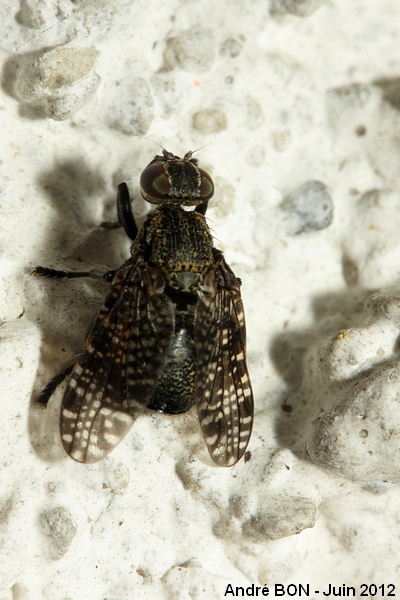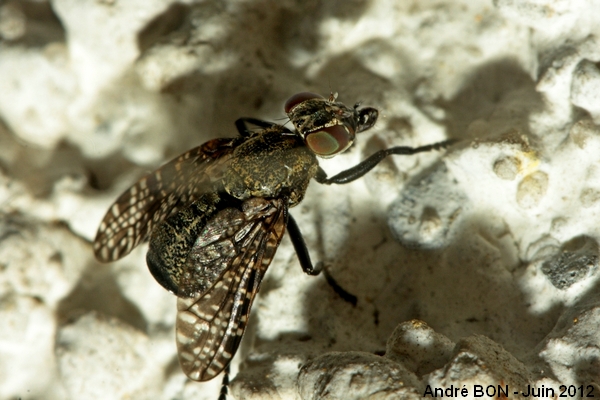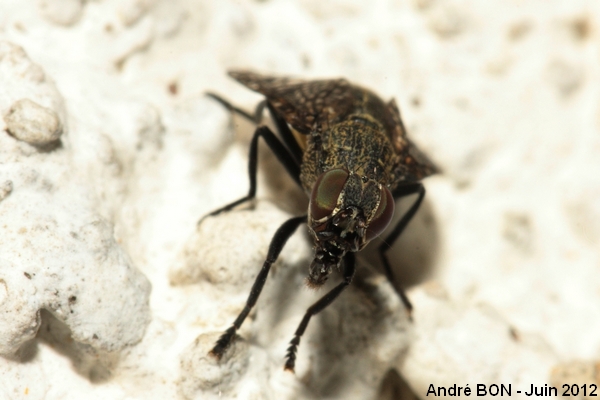


| Platystoma seminationis (Fabricius, 1775) |



|
|
Scientific name: Platystoma seminationis (Fabricius, 1775) Common name: French name: Platystome des semailles Order: Diptera Family: Platystomatidae Wingspan : 4.5-5 mm. Biotope: Areas with flowers and high grasses, shady places, woodland edges, hedgerows and shrubs, parks and gardens close to compost heaps. Geographic area: Europe except in the northern regions, Asia Minor. Observation period : May to October. |
Platystoma seminationis is a small fly with a short and oblong body and a flattened head. The proboscis is very large and hangs outside the mouth cavity. The reddish brown eyes are rather large and well separated on both sexes. The thorax is black with a golden yellow pubescence. The oval-shaped abdomen is black on the upper side and straw yellow on the under side. The female's one always shows an outstretched ovipositor at the tip. The wings are dark grey to blackish and covered by small white spots. Mating is preceded by a nuptial display with male and female touching each other with their large proboscis just like kissing on their mouth. Larvae feed on decaying plants. Platystoma lugubre is a slightly larger size. Its proboscis is even larger and resemble a gas mask. The upper side of the tergites shows two large light-coloured patches. |
| [To know more about the Platystoma seminationis] [Next picture] [Top] |

|
It seems to me that the lack of a visible ovipositor at the back of the abdomen indicates one male. |
| [To know more about the Platystoma seminationis] [Next picture] [Previous picture] [Top] |

|
The small size and the abdomen without any large light-coloured spot rather lead me to the Platystoma seminationis species than to the Platystoma lugubre species. |
| [To know more about the Platystoma seminationis] [Previous picture] [Top] |

|
Front view showing the well separated eyes and the size of the proboscis. |